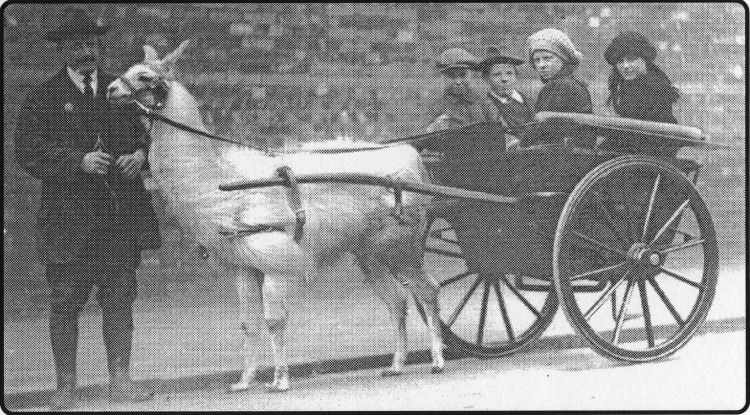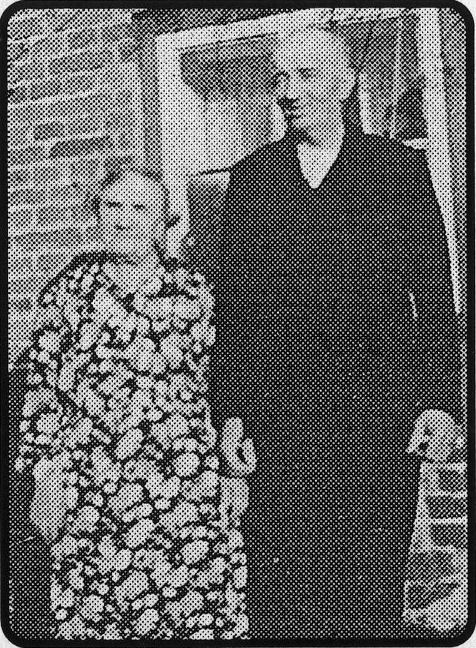
Published 14 June 2001



Big welcome
NO TOWN in England sent more Volunteer soldiers to South Africa than
Folkestone to augment regular troops fighting in the protracted Boer War, a
century ago -according to a Folkestone Herald writer in 1901.
And staff man Felix, armed with copies of the Folkestone Herald, was at
Southampton to meet Capt Graham Gosling and the Folkestone Volunteer Company
of the Buffs when they arrived home from the battle front in the liner
Avondale Castle in the early hours after a 6,000 mile voyage with 1,300
troops. They came from all over the UK.
Capt Gosling, referring to the reception he was expecting his men to receive
back in Kent, said “All they do for them in Folkestone will not be too much.
“They deserve every consideration. A better lot of fellows do not exist!”
Stirring scenes
Once ashore the troops waited until their particular train arrived, the
Folkestone contingent soon spotting a “Canterbury” sign over some of the
carriage doors, indicating their train home.
And Felix was delighted to be allowed to accompany the men on the seven-hour
journey.
Needless to say there were scenes of rejoicing both at Canterbury and in
Folkestone at the return of “their boys” and, wrote Felix, they were the
most stirring events he had experienced in 10 years with the Herald.
There was a welcome at the Town Hall and at the Volunteer Club in Tontine
Street, another celebration at the Pleasure Gardens, a banquet in the
Pavilion Winter Gardens, and even a wedding.
Colour Sgt William Cushion, a mounted infantryman of the 1st Yorkshires,
recently invalided home from the Boer War, was the lucky man!
And at Hythe, George Chapman, in peace time a local post office worker, who
had been serving 18 months with the Buffs in Africa, was given star
treatment - a ride through the town in an open carriage.
His colleagues took the places of horses in pulling the carriage in a
procession through the streets.
The home coming of the volunteer troops of the East Kent Regiment of the
Buffs was the cause of great celebration for weeks in the district.
Apart from a special picture supplement showing the Avondale and troops home
from Africa in Southampton, the Folkestone Herald also carried a rare
picture on its normal news pages, of Trooper Charles Davis, on horse back.
He was a member of the Folkestone troop of the Royal East Kent Yeomanry
(also known as the Mounted Rifles.)
The son of Adolphus Davis, a major shop owner in Sandgate Road, Charles, no
doubt inspired by the exploits of volunteers fighting in South Africa in the
Boer War, had joined the Yeomanry and took riding lessons under Lieutenant
Connell at the Shorncliffe Camp Riding School._
11®:
TOP: Folkestone parish church at The Bayle - a postcard view of about a
century ago. And, above a Llama does a pony’s work giving children rides
near the port nearly 100 years ago.
Jp
And he won the Troop Prize, given by Major Mackinnon, as the top man of 25
riders.
A close second was Trooper A White, of the Martello Hotel, Folkestone.
Charles Davis went on to complete the ‘double’, taking the regimental prize
as well.
Display
Folkestone Local History Society is presenting a photographic display called
“Folkestone’s disappearing Churches,” at the parish church. It is open
I0am-1pm, Mondays to Saturdays inclusive, for three months.
FORMER Shorncliffe groundsman Ron Dutt was interested to see the review of
the book Kent lighthouses and Lightships in Memories recently. He has a
special interest in the subject because his grandfather Jim Dutt - pictured
left with his wife Kate (nee Ramsden,) who was born on Romney Marsh - helped
build one of the earliest of the Dungeness lighthouses. The couple are
pictured outside their onetime home in Lower Hardres, at Street End. Ron's
mother, Sarah Frances Dutt, was born at Lydd. She was one of Jim and Kate's
11 children.
 |
Folkestone soccer squad tops East Kent League
tt Q/\'f FOLKESTONE FC teamsters were into JL9UJ. the medals, having
finished top of the East Kent League. MP Sir Edward Sassoon made the
presentation at a celebration concert at the Artillery Drill Hall
attended by Volunteers home from Africa. The Beach Rocks Convalescent
Home in Sandgate, “borrowed’' by the War Office for care of wounded
soldiers from the Boer War. was transferred to the governors of the
Morley House Convalescent Homes, in St Margaret's Bay. near Dover. It
seems strange to read of the problems being caused by traffic noise in
Guildhall Street, a century ago. Traders were complaining that they were
having great difficulty serving their customers because they could not
hear their orders over the din of "all the buses, chars-a-bancs.
wagonettes, and motors, from Cheriton and Hythe" passing through. And
they were calling on the Council to pave the road with wood blocks to
deaden the sound. And the Herald editor told of new legal powers to
control charabanc excursionists who annoyed locals by blowing horns or
simply shouting.
|
Local swimmer trains for Channel swim race
QC<| ELIMINATING heats were being held ^«/9J»in Folkestone by swimmers
hoping to enter the Daily Mail cross-Channel Swimming Race. Several had
to drop out through sickness. Those completing successful test swims
included Elna Anderson, Danish physical training teacher at Brampton
Down School, Folkestone and Miss Nora Goldsack, 51, a cook, from Dover.
A few days later Miss Anderson learned that she had been eliminated from
the s<|u.id ts compete In the race. But. she said, she would still make
an attempt at the Channel marathon later in the year. And she did. but
she had to give up after a swim lasting 12hrs 30m. She made another
unsuccessful bid a year later. She had hoped to become the first woman
to swim from England to France. Herald writer "Roamer" wrote of his
disappointment in seeing the recently renovated Stelling Minnis windmill
reduced to one pair of sweeps. It was only a few years since a major
renovation as a memorial to Canterbury woman's brother. The sweeps were
15 years old and the miller, Mr S Davidson, aged 86. said they should
have lasted 40 years. But later lightning damage may have caused a
weakness, leading to loss of a swccd in a recent
|
Council rejects objections to sea defences scheme
•f QQ/J LOSS of shingle at Sandgate and plans for X9&U a new groyne to
prevent erosion was causing controversy and nearly 270 people signed a
petition against the plans and disposal of shingle. But Sandgate
Councillor J Maltby said people had short memories. A few years ago
there had been a great deal of trouble and expense caused by a build up
of shingle which heavy seas sent flying everywhere. The result was they
had to spend a large amount of money to clear it. particularly off the
roads. Disposal of ‘surplus' shingle was a useful source of income.
Local residents could bo assured, he said, that they would not let the
beach go if there was any risk to sea defences. The Council rejected the
petition and called on owners of groynes at the Riviera be asked to put
them in order. It was also agreed to ask the Bevan Hospital to repair a
badly holed groyne in front of their property. Herald writer Felix wrote
about the Black Bull Hotel and an early painting which depicted the
tumble-down original inn surrounded by nothing but bare fields. Some of
the ancients, he wrote, shook their heads at the decision to go ahead
and build a new public house there, but it had become the centre-point
of a whole new township built around it.
|
Heard the tale of the cheese and soap clock at Hythe?
•"I Q7£> HERALD “Around and About" writer •L*7 f O Stroller told of the
friendship between two racing motorists which led to the birth of the
Romney Hythe & Dymchurch Light Railway. Those two men were Capt John
Howey and Count Louis Zborowski, of Bridge. Both shared a love for both
motoring and miniature railways and. in 1924, the Count ordered two 15"
gauge steam locomotives. Within months, however, the Count had been
killed driving for Mcni'dcs ir the Italian Grand Prix at Monza and Capt
Howey was left to pick up the pieces — and the two locomotives. Howey
found a new partner and the result we know, the first part of the Romney
Hythe & Dymchurch Light Railway was finished in 1927. Heard the tale of
the cheese and soap clock at Hythe Town Hall? Twenty-five years ago the
Herald told how Cecil Capon, for many years a tailor in Stade Street,
described how Jack Grifley. a signwritcr and notorious practical joker,
once made a rather special clock. Frustrated by the long time it was
taking to deliver the Town Hall clock he made one! Taking a girl's
wooden hoop, two cakes of soap and a hollowed out Dutch cheese he
fashioned the unusual clock and one night fixed it to the Town Hall.
Attached was a rhyme - "The clock is here - it goes quite easy; The
weights are soap and the pendulum cheesey.” |
|




